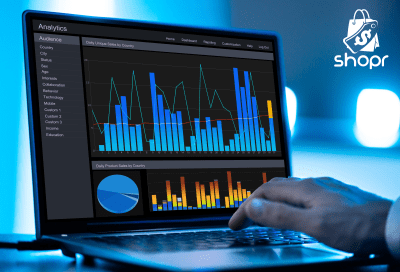 Loyalty programs play a crucial role in retaining customers and increasing their long-term value. However, many traditional programs rely on static rewards that lose appeal over time. A data-driven approach helps keep customers engaged by making rewards more relevant and meaningful.
Loyalty programs play a crucial role in retaining customers and increasing their long-term value. However, many traditional programs rely on static rewards that lose appeal over time. A data-driven approach helps keep customers engaged by making rewards more relevant and meaningful.
By analyzing customer behavior, loyalty programs can be refined to offer personalized incentives that strengthen long-term relationships. Tracking spending patterns, engagement trends, and redemption habits leads to smarter decisions and improved retention.
Common Challenges with Traditional Loyalty Programs
Many loyalty programs follow a one-size-fits-all model, offering the same rewards to every customer. This approach often results in:
- Low Engagement – Rewards that don’t align with customer interests lead to decreased participation.
- Complicated Redemption – Difficult processes make rewards less appealing and limit program success.
- Missed Revenue Opportunities – Without data analysis, high-value customers may not be identified or rewarded effectively.
- Limited Long-Term Impact – Programs that remain static struggle to maintain ongoing customer interest.
As customer expectations evolve, loyalty strategies need to adapt to provide more relevant and accessible rewards.
The Impact of Data-Driven Loyalty Programs
A well-structured loyalty program uses customer data to improve engagement and increase lifetime value. Key benefits include:
1. Identifying Spending Patterns
Analyzing transaction data helps shape more effective loyalty programs.
- A travel company can encourage bookings during off-peak seasons by offering targeted incentives.
- A retailer can create promotions based on frequently purchased products.
- A restaurant can introduce bonus rewards for regular guests.
Aligning rewards with actual spending behavior makes programs more effective.
2. Refining Offers Based on Redemption Trends
Tracking how rewards are redeemed provides insight into what works and what doesn’t.
- If certain rewards are rarely used, adjustments may be needed.
- Expanding popular redemption options can boost participation.
- Seasonal or time-sensitive promotions can drive engagement during slower periods.
Ongoing analysis ensures rewards remain valuable and appealing.
3. Recognizing and Rewarding High-Value Customers
Not all customers engage at the same level. A data-driven approach helps:
- Identify top spenders and provide exclusive perk.
- Develop tiered reward structures that offer better incentives for frequent purchases.
- Re-engage inactive customers with targeted promotions.
Allocating loyalty resources strategically ensures meaningful rewards for the most engaged customers.
4. Creating More Flexible Rewards
Many traditional loyalty programs have rigid structures that limit how and when rewards can be used. A data-driven approach enables:
- Cash back that applies across multiple purchases instead of being limited to specific items.
- More frequent redemption opportunities instead of requiring large point balances.
- Personalized incentives based on past purchases.
Providing flexibility increases customer engagement and satisfaction.
How Shopr Rewards Enhances Customer Retention
Shopr Rewards enables a data-driven approach to loyalty, helping brands keep customers engaged year-round.
- Spending patterns inform promotions that drive repeat visits.
- Customizable cash back incentives create relevant, real-time rewards.
- Performance data allows for ongoing program adjustments based on real customer behavior.
A strategic approach to loyalty ensures rewards remain valuable, increasing retention and lifetime customer value.





